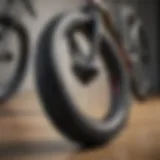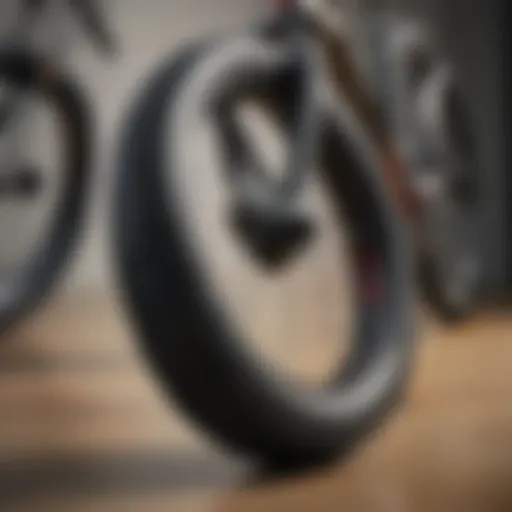Understanding 4 Inch Drain Pipe Tee Functionality
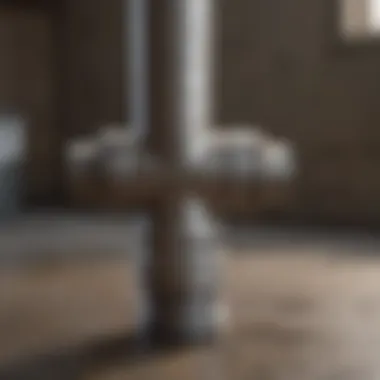

Intro
In plumbing systems, components work together to ensure effective water management. One such critical element is the 4 inch drain pipe tee. This fitting plays a significant role in directing wastewater from various sources into a drainage system efficiently. Understanding its functionality and applications can aid homeowners and professionals in improving plumbing performance in residential and commercial settings.
Overview of Topic
A 4 inch drain pipe tee is a specific type of plumbing fitting that allows the connection of three pipes in a T-shape formation. It typically comprises three openings: one main outlet and two side inlets. The design facilitates the diversion of wastewater or stormwater from two separate pipes into a single outlet, promoting effective water flow and drainage.
The importance of this plumbing component cannot be overstated. In any drainage system, the efficiency of water movement directly impacts the overall performance. A properly installed drain pipe tee minimizes blockages and facilitates a steady flow, crucial for maintaining optimal plumbing function. This ensures that areas of a property remain dry and functional, which is essential for homes and businesses alike.
Common Challenges and Solutions
Homeowners often encounter issues related to drain pipe tees, primarily blockages and improper installation. Some common problems include:
- Clogs: Debris, grease, and other materials can accumulate in the tee, leading to slow drainage or backups.
- Leaks: Poor installation or material failure may result in leaking joints, causing water damage over time.
- Incorrect Sizing: Choosing an inappropriate size can lead to inadequate drainage capacity, making the system inefficient.
To overcome these challenges, consider these solutions:
- Regular maintenance is key. Schedule periodic inspections and cleanings to remove buildup in the pipes.
- Use high-quality materials for installation. PVC or ABS pipes are durable options that can prevent leaks.
- Ensure proper sizing by consulting a plumbing professional. They can help you determine the right specifications for your home's drainage needs.
Product Recommendations
When selecting products for installing or replacing a 4 inch drain pipe tee, several highly regarded options stand out in the market:
- Charlotte Pipe PVC 4" Tee: This product is well-known for its durability and resistance to corrosion. It is ideal for residential use, ensuring long-term reliability.
- NDS 4" Drainage Tee: This tee is designed for ease of installation with its lightweight features and robust construction, suitable for various drainage systems.
Each of these products comes with benefits like ease of installation, longevity, and efficiency in water management. Choosing the correct product can streamline your plumbing projects considerably.
Step-by-Step Guides
To implement or replace a 4 inch drain pipe tee effectively, follow these practical steps:
- Gather Tools and Materials: Ensure you have all necessary tools like a hacksaw, PVC pipe cement, and measure tape.
- Plan the Layout: Determine where the new tee will be installed in relation to existing pipes.
- Cut the Pipes: Using a hacksaw, carefully cut the pipes where the tee will be placed.
- Dry Fit the Tee: Before securing it, dry fit the tee to check alignment.
- Apply Cement: Once everything fits well, apply PVC cement on the ends of the pipes and inside the tee.
- Join the Pieces: Quickly join the pieces, ensuring a snug fit. Allow time for the cement to set as per the manufacturer's instructions.
- Test the System: Finally, test the system for leaks by running water through the pipes.
By following these steps, homeowners can ensure a reliable connection within their plumbing systems, enhancing drainage efficiency.
Proper installation and maintenance of a 4 inch drain pipe tee are crucial for optimal plumbing functionality.
Foreword to Drainage Systems
Understanding drainage systems is pivotal for home and property owners. Proper drainage is crucial for maintaining the functionality and longevity of residential and commercial structures. It prevents water accumulation, which can lead to significant damage and costly repairs.
A well-designed drainage system not only diverts excess water but also improves sanitation and minimizes flood risks. Observing these principles can enhance property value and ensure a safe living environment. Without effective drainage, even the most beautiful homes can succumb to water-related issues.
Importance of Proper Drainage
Water is an essential resource, but it can also be a homeowner's worst nemesis if not managed correctly. Here are several reasons why proper drainage matters:
- Structural Protection: Water can erode foundations, causing cracks and instability.
- Mold and Mildew Prevention: Standing water leads to favorable conditions for mold growth, which can affect indoor air quality.
- Soil Erosion Control: Effective drainage reduces soil displacement during heavy rains.
- Cost Savings: Investing in proper drainage upfront can save thousands in repairs later.
Proper drainage ensures that water flows away from your property rather than pooling, mitigating the risk of potential damage.
Overview of Drain Pipe Components
Drainage systems consist of various components, each serving a vital role. Understanding these components helps in better maintenance and efficient system design. Here are the primary elements to consider:
- Pipes: The main aspect of a drainage system, including different sizes and materials.
- Connectors: These pieces, like tees and elbows, join sections of pipe together, allowing for changes in direction or branch offs, crucial for efficient water flow.
- Catch Basins: These collect excess water and debris, integrating with drain pipes to direct water away from the property.
- Grates or Covers: Found on top of catch basins, they prevent larger debris from entering the system while allowing water to flow through.
Understanding these components enables homeowners to make informed decisions regarding installation and maintenance. Proper use of these elements results in a functional and efficient drainage system that protects properties from water-related issues.
Defining the Inch Drain Pipe Tee
Understanding the 4 inch drain pipe tee is crucial because it serves a fundamental purpose in modern plumbing systems. This component effectively directs the flow of waste and water, maintaining the efficiency of drainage systems in both residential and commercial settings. Comprehending its design and functionality enables users to make informed decisions, preventing potential drainage issues down the line. Different types of tees cater to specific needs, ensuring that waste is channeled properly, which ultimately affects the longevity of drainage systems.
What is a Drain Pipe Tee?
A** drain pipe tee** is a plumbing fitting that allows for the connection of three different pipes, creating a T-shaped junction. This configuration is vital for redirecting flow from a primary line into secondary lines without disruption. Typically made to accommodate various diameters, the 4 inch drain pipe tee is widely utilized for handling waste from appliances and fixtures. By allowing flows to diverge efficiently, it reduces the risk of clogs and backups, which can result in costly repairs and inconveniences.
Specifications and Material Properties
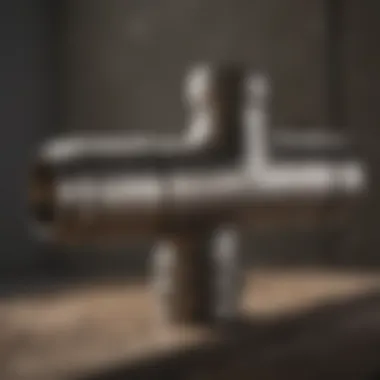

The specifications of a 4 inch drain pipe tee include its diameter, length, and the angle of connections, which usually range between 30 to 90 degrees depending on the design. The material used in the construction of these tees varies widely, from PVC to cast iron and ABS, each offering unique advantages.
- PVC (Polyvinyl Chloride): Known for its resistance to corrosion, PVC is lightweight and easy to work with, making it a common choice for residential systems.
- ABS (Acrylonitrile Butadiene Styrene): Slightly more flexible than PVC, ABS is also resistant to impacts, and this quality makes it suitable for colder climates.
- Cast Iron: Although heavier and often more expensive, cast iron provides excellent sound insulation and durability, ideal for commercial applications.
When selecting a 4 inch drain pipe tee, consider the material's compatibility with existing pipes, environmental factors, and anticipated flow rate. Proper specifications and solid material choices lead to a reliable and efficient drainage system.
Types of Inch Drain Pipe Tees
Understanding the different types of 4 inch drain pipe tees is crucial for effective drainage solutions. Each type of tee has its own unique function and benefits, making it essential for homeowners and plumbing professionals to choose the correct fitting for their specific application. This section discusses the key types of 4 inch drain pipe tees, including standard, reducing, and radius varieties, while also addressing their distinct characteristics and uses.
Standard Tee Fittings
Standard tee fittings are perhaps the most commonly used type of 4 inch drain pipe tee. They allow for the diversion of flow within a system, providing two outlets from a single inlet. Their primary function is to connect three sections of pipe at 90-degree angles, effectively managing drainage in both horizontal and vertical configurations.
Some advantages of standard tee fittings include:
- Versatility: Ideal for residential applications, such as in home drainage systems.
- Simplicity: Easy to install and readily accessible in most plumbing supply stores.
- Cost-effective: Generally less expensive than specialty fittings.
When considering standard tees, it's important to ensure that proper sizing and material compatibility is acknowledged to prevent leaks.
Reducing Tee Fittings
Reducing tee fittings differ from standard tees by allowing for the connection of pipes of varying diameters. This can enhance the efficiency and adaptability of drainage systems, especially in projects that integrate multiple pipe sizes due to design constraints or existing infrastructure.
Key points about reducing tees include:
- Flexibility: Ideal for systems where pipe sizes change frequently.
- Efficiency: Helps to optimize flow rates, which can reduce potential clogs.
- Space-saving: May be essential in confined spaces where larger fittings cannot be accommodated.
Choosing a reducing tee entails careful measurement to ensure compatibility with existing pipes, as improper fittings can lead to significant issues in the system.
Long Radius Vs. Short Radius Tees
The distinction between long radius and short radius tees is critical in determining how fluids navigate through drainage systems. Long radius tees are designed with a larger bend, allowing for a smoother flow, which is beneficial for minimizing turbulence and pressure drop in the system. In contrast, short radius tees are more compact, leading to sharper turns, which can be advantageous in tight installations but may result in a higher chance of turbulent flow.
Considerations when choosing between the two include:
- Fluid Dynamics: Long radius tees promote better flow characteristics.
- Installation Space: Short radius may be required when space is limited.
- Cost Implications: Long radius tees tend to be more expensive due to their design and complexity.
It is essential to evaluate the specific requirements of your plumbing project to determine the most suitable type of 4 inch drain pipe tee.
Applications of Inch Drain Pipe Tees
The application of 4 inch drain pipe tees plays a significant role in ensuring effective drainage solutions. Understanding their functions can simplify various plumbing issues in both residential and commercial settings. These tees not only facilitate the movement of water within drainage systems but also aid in managing water flow efficiently. Proper application of these components can lead to increased longevity of the plumbing system and reduced maintenance costs.
Residential Drainage Systems
In residential drainage applications, the 4 inch drain pipe tee serves several critical functions. It allows for the diversion of wastewater from fixtures like sinks and toilets into a main drainage line. This ensures the system can handle varying volumes of water from multiple sources without backing up.
The installation of these tees can enhance the overall performance of a home's plumbing system. They help manage flow more effectively, meaning less risk of clogs or blockages. Regular use in bathroom or kitchen remodels is common. Homeowners are encouraged to consider their layout to ensure optimal performance.
Commercial and Industrial Uses
4 inch drain pipe tees find major applications in commercial settings, too. Businesses that generate large volumes of wastewater need reliable and efficient plumbing solutions. These tees can manage high flow rates, making them suitable for restaurants, factories, and other facilities.
The industrial use of these pipes often involves more complex systems. They can accommodate the needs of a variety of processes, ensuring that every section of the plumbing network functions smoothly. Investing in high-quality tees is crucial in these scenarios, as it often influences operational efficiency.
Stormwater Management Systems
Stormwater management is another area where 4 inch drain pipe tees are essential. These systems are necessary to control surface runoff. When rain falls, it collects in various areas, and drain tees are used to route this water to proper drainage outlets. This helps prevent flooding and soil erosion in gardens and yards.
Efficient stormwater management helps maintain community standards and protects infrastructure. The tees help integrate systems like gutters and downspouts, providing a way to direct excess water safely away from buildings and toward storm drains.
The correct application of 4 inch drain pipe tees not only improves water flow accuracy but also protects property from stormwater-related damages.
Installation of Inch Drain Pipe Tees
The installation of a 4 inch drain pipe tee is a crucial step in ensuring an efficient drainage system. Proper installation affects not only performance but also the longevity of the system. A well-placed tee fitting allows for effective flow distribution, enabling water to navigate through the plumbing system correctly. Considering various elements such as tools, steps, and common errors can significantly streamline the installation process, resulting in a robust drainage setup.
Tools Required for Installation
Before beginning the installation process, gathering the necessary tools is essential for a smooth operation. Here is a list of commonly needed tools:
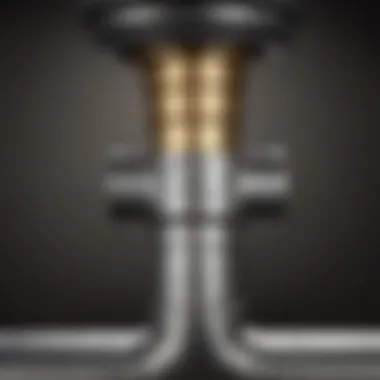

- Pipe Cutter: For precise cutting of the pipe material.
- Measuring Tape: To ensure accurate length measurements for the pipes.
- Deburring Tool: To smooth out the edges of cut pipes, preventing obstructions.
- Marker: For marking measurements clearly on the pipe.
- Trowel or Spade: Particularly important if excavation is needed.
- Safety Gear: Such as gloves and goggles, to ensure safety during installation.
Step-by-Step Installation Guide
Installing a 4 inch drain pipe tee involves careful steps to guarantee proper connection and function. Here is a structured guide:
- Plan the Layout: Determine where the tee will be placed within the existing drainage system. This includes sketching a simple diagram of how water will flow through the pipes.
- Measure and Cut: Use the measuring tape to find the appropriate length for the pipes that will connect to the tee. Cut the pipes using a pipe cutter for a clean finish.
- Deburr the Edges: After cutting, use the deburring tool to remove any sharp edges. This step helps maintain a smooth water flow.
- Position the Tee: Fit the tee into the designated area. Ensure that the openings align correctly with the pipes leading to and from the tee.
- Secure Connections: Depending on the type of pipes and fittings, secure the connections. This may involve using specific coupling fittings or solvents.
- Test for Leaks: Before covering up any excavated ground, run water through the system to check for potential leaks. If everything is tight, then the installation is successful.
Common Installation Mistakes
Even experienced installers can make errors. Below are some common mistakes to avoid:
- Misalignment: Failure to ensure that the tee fitting is properly aligned can lead to poor drainage and potential blockage.
- Improper Sealing: Not using enough solvent or improperly securing connections can cause leaks, resulting in water damage.
- Ignoring Local Codes: Every area may have specific regulations regarding plumbing installations. Always check local building codes to ensure compliance.
Proper installation is vital for ensuring that your drainage system operates efficiently and effectively.
By understanding the steps and gathering the appropriate tools, it becomes easier to install a 4 inch drain pipe tee. Awareness of common mistakes further safeguards against potential issues, offering a more reliable drainage solution.
Maintenance of Drain Pipe Tees
Maintaining a 4 inch drain pipe tee is crucial in ensuring its long-lasting functionality and efficiency within your drainage system. Regular maintenance helps prevent blockages, leaks, and other complications that can arise over time. Neglecting this aspect can lead to costly repairs and disruptions in your plumbing system. Therefore, understanding proper maintenance practices is essential for both homeowners and housewives focusing on keeping their homes running smoothly.
Regular Inspection Practices
Conducting regular inspections is vital for maintaining the integrity of your drain pipe tees. Here are some best practices to follow:
- Visual Checks: Regularly inspect visible parts of the drain system for any signs of leaks or damage. Look for discoloration, water stains, or mold growth around joints or fittings.
- Listening for Unusual Sounds: Unusual sounds, such as gurgling or bubbling, can indicate blockages or air trapped in the system.
- Using a flashlight: Inspect deeper parts of the drainage with a flashlight. This allows easier identification of any clogs or dirt build-ups inside the pipes.
Performing these checks at least twice a year helps in identifying potential issues before they escalate into major problems.
Signs of Wear and Tear
Recognizing the signs of wear and tear in your drain pipe tees can save significant repair costs. Some common indicators include:
- Cracks or Fractures: Look for physical damage on the pipe itself. Small cracks can lead to larger issues if not addressed early.
- Continuous Clogging: If you notice that the drain frequently clogs, this can be due to a failing tee fitting.
- Leaking Joints: Inspect the joints for moisture or dripping water. This can indicate a failure at the connection points, often a sign of deterioration.
Being aware of these signs can enable you to take timely action, reducing risks to your plumbing system.
Repair Strategies for Common Issues
When dealing with common plumbing issues related to 4 inch drain pipe tees, having clear strategies for repairs is advantageous. Some basic approaches include:
- Seal Minor Leaks: For minor leaks, using a suitable plumbing tape can temporarily seal leaks until a permanent solution is implemented. Make sure to choose tape that can withstand moisture without degrading.
- Joint Replacement: If wear is significant at any joint, consider replacing the entire fitting. It is often more effective than patching a broken joint.
- Snake the Drain: If regular clogging occurs, running a drain snake can help remove any obstructions that may be accumulating within the tee fitting or adjacent pipes.
"Regular maintenance not only extends the life of your plumbing but also enhances the efficiency of your drainage system."
Incorporating these maintenance practices into your routine can ensure that your drainage system remains functional and effective. From timely inspections to recognizing signs of wear, staying proactive matters significantly in the longevity and efficiency of your 4 inch drain pipe tees.
Selecting the Right Drain Pipe Tee
Choosing the right drain pipe tee is a crucial decision for maintaining effective drainage systems. The selection process not only influences the efficiency of water flow but also affects the longevity of your plumbing infrastructure. An ill-fitted or poor-quality tee can lead to various problems such as leaks, clogs, or even system failures. Understanding which features to prioritize when buying a 4 inch drain pipe tee can help prevent costly repairs and ensure smooth operation.
In this section, we will delve into several key aspects that should guide your selection, including functionality, material types, and compatibility with existing systems. This will also encompass examining specific features that cater to your needs, which can be essential in enhancing your overall drainage efficiency.
Factors to Consider Before Purchase
Before making a purchase, one must evaluate several factors.
- Material Choice: Drain pipe tees come in various materials like PVC, ABS, and cast iron. Each material has unique characteristics such as weight, durability, and resistance to corrosion. For example, PVC is lightweight and resistant to many chemicals but may not hold up as well under extreme temperatures compared to cast iron.
- Diameter Specifications: As the title indicates, you’re looking at a 4 inch drain pipe tee. However, it is essential to confirm this measurement with your existing plumbing system to ensure compatibility. Mismatched sizes can lead to leaks or blockages.
- Fitting Type: Check if the fitting type matches your installation method. There are various types like solvent-weld or mechanical fittings, and selecting the correct type can streamline the installation process and affect the overall performance of the system.
- Application Suitability: Consider where the tee will be installed. For instance, if it is for outdoor use, more robust materials such as PVC might be advisable as they offer greater resistance to environmental elements.
- Brand Reputation: Understanding different brand reliability is crucial. Brands with a good track record for manufacturing quality plumbing products often provide warranties and customer support, which can be beneficial when issues arise.
Comparative Analysis of Brands
When selecting a drain pipe tee, comparing brands can illuminate the differences in quality and price.
Several brands like Charlotte Pipe, Sioux Chief, and NIBCO are prominent in the market. Each offers distinct product lines that cater to various needs.
- Charlotte Pipe: Known for PVC and ABS products, this brand emphasizes quality assurance and longevity. Their teeps often feature added UV resistance, making them suitable for outdoor installations.
- Sioux Chief: They focus more on versatility, offering multiple fitting types, which can be a significant advantage for those who prioritize installation ease. Their products are generally rated highly for durability in commercial applications.
- NIBCO: This brand is notable for its innovative designs and a wide range of sizes. They also provide extensive technical resources, which can aid in selecting the right product for specific situations.
By comparing these options, one can better discern not just the cost, but the overall value of the products available. Choosing a reputable brand can be a wise investment in the long-term flow and efficiency of your drainage systems.
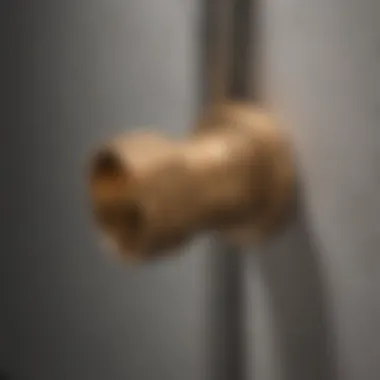

"Investing in quality components like a drain pipe tee can significantly enhance the performance and reliability of your plumbing infrastructure."
Selecting the right drain pipe tee requires careful consideration of these factors. By evaluating your specific needs and reviewing options across brands, you increase the potential for successful installations and efficient functioning of your drainage systems.
Cost Factors Related to Drain Pipe Tees
Understanding the cost factors related to 4 inch drain pipe tees is crucial. These components are not just simple fittings; they play a key role in determining the efficiency and durability of drainage systems. Housing owners often overlook this aspect, thinking only about the upfront pricing. However, considering the lifetime costs, installation costs, and potential maintenance is more significant.
Several components contribute to the overall costs of these fittings. The material choice, design complexity, and brand reliability can all affect pricing. Additionally, the standards and certifications governing plumbing materials influence what you will spend. As such, effective planning around reinforcing budget helps you to select the correct product without overspending.
Average Pricing Overview
When it comes to selecting 4 inch drain pipe tees, prices can vary notably based on multiple factors. Generally, here are some expected price ranges:
- Standard fittings: These usually cost between $5 to $15 per unit, and they are widely available at most hardware stores.
- Reducing tees: Expect higher costs between $10 to $30 as these have specialized designs for varying pipe sizes.
- Long radius tees: These range from $15 to $40, mainly because of their specific applications in residential and commercial settings.
When planning a purchase, always consider the total project requirements, as bulk purchases can offer volume discounts.
"Investing in quality fittings now can save money on repairs in the future."
Budgeting for New Installations
Budgeting for new installations involving 4 inch drain pipe tees requires a strategic approach. Clearly outline each component's costs, including additional materials such as pipes, connectors, and tools required for installation. Here’s what to keep in mind:
- Establish a base budget: Begin with a total allowance for your plumbing project. Break down costs for each fitting, along with other necessary supplies.
- Include labor costs: If you're not doing the work yourself, factor in labor charges if you hire a plumber. Average plumbing labor can range from $45 to $150 per hour, depending on the complexity of the work.
- Consider unexpected expenses: It is prudent to set aside a percentage of your overall budget, typically around 10%, to cover any unforeseen issues that may arise during installation.
In summary, understanding the costs associated with 4 inch drain pipe tees is integral not only to prevent budget overruns but also to ensure that the project meets the desired outcomes of efficiency and effectiveness.
Regulatory Aspects of Drain Pipe Installation
In any plumbing system, the role of regulatory compliance cannot be overstated. Understanding the regulatory aspects of drain pipe installation is essential for ensuring not only the safety and efficacy of plumbing systems but also legal adherence. Compliance with these regulations especially helps in preventing future issues related to plumbing failures, which can be costly and hazardous.
Understanding Local Building Codes
Local building codes provide guidelines regarding construction and installation practices in specific areas. They dictate everything from the types of materials used to how pipes should be supported. Adhering to local building codes ensures that the installation of 4-inch drain pipe tees meets safety standards and functions as intended.
These codes often discuss:
- Material Specifications: Only approved materials should be used for pipes and fittings to prevent issues with corrosion or wear.
- Installation Techniques: Proper installation techniques protect against leaks and structural failures.
- Separation from Contaminants: Building codes may specify distances for drainage systems from other utilities to avoid contamination risks.
Being aware of these codes can save homeowners time and money while helping avoid legal issues.
Permitting Requirements
Before beginning any plumbing installation, understanding the permitting requirements is crucial. Many local authorities require permits for drain pipe installations, especially if they involve significant changes to existing plumbing systems. Obtaining these permits guarantees that the work will be inspected and meets the local safety standards.
Some key points to consider regarding permits:
- Application Process: Residents need to apply for a permit through their local government, providing details about the project.
- Inspections: Most permits require inspections at various stages to ensure compliance.
- Consequences of Non-Compliance: Failure to obtain a permit can result in fines or orders to remove incorrectly installed systems.
"Understanding and complying with local regulations is not just a legal formality; it is a prerequisite to ensure the long-term success and safety of plumbing systems."
Overall, addressing the regulatory aspects of drain pipe installation is vital. The adherence to codes and permits guarantees that installations enhance functionality, efficiency, and safety for homeowners.
Future Trends in Drain Pipe Technology
Understanding the future trends in drain pipe technology is essential for homeowners and professionals alike. With the increased focus on effective drainage solutions, it's crucial to stay informed about the innovations that directly impact drainage efficiency and overall system performance. This aspect of the drainage industry not only affects installation and maintenance practices but also plays a significant role in long-term cost savings. Embracing these advancements can lead to better management of resources and a more sustainable approach to drainage systems.
Innovations in Material Science
Material science has seen tremendous advancements in recent years, particularly in the domain of plumbing and drainage solutions. The introduction of high-density polyethylene (HDPE) and polyvinyl chloride (PVC) has transformed the construction of drain pipes. These materials offer several benefits, including resistance to corrosion, ease of installation, and longevity.
Using innovative composite materials that reinforce structural integrity can greatly reduce the risk of breaks and leaks. These developments not only enhance durability but also improve the adaptability of the drainage systems to various environmental conditions.
Moreover, biodegradable pipe materials are becoming a noteworthy topic. They provide an eco-friendly alternative, suitable for stormwater management systems. This ensures that the environmental impacts of drainage installations are minimized.
Adaptive Drainage Systems
Adaptive drainage systems represent a forward-thinking approach to managing water flow. Unlike traditional systems that remain static, these new systems can adjust to changing environmental conditions and water flows.
Some key features of adaptive drainage systems include:
- Real-time monitoring: Technology allows users to track water levels and adjust drainage methods when necessary.
- Automation: Certain systems can respond automatically to heavy rainfall, optimizing flow paths to prevent backups.
- Integration with smart technologies: The use of sensors and IoT devices enables better performance and adaptability for homeowners.
The integration of these features leads to more efficient water management while also addressing the growing concerns regarding flooding and runoff. These innovations not only address practical aspects but also contribute to a healthier ecosystem.
"Investing in advanced drainage technology is not just about compliance; it's about creating sustainable communities that can efficiently handle stormwater."


